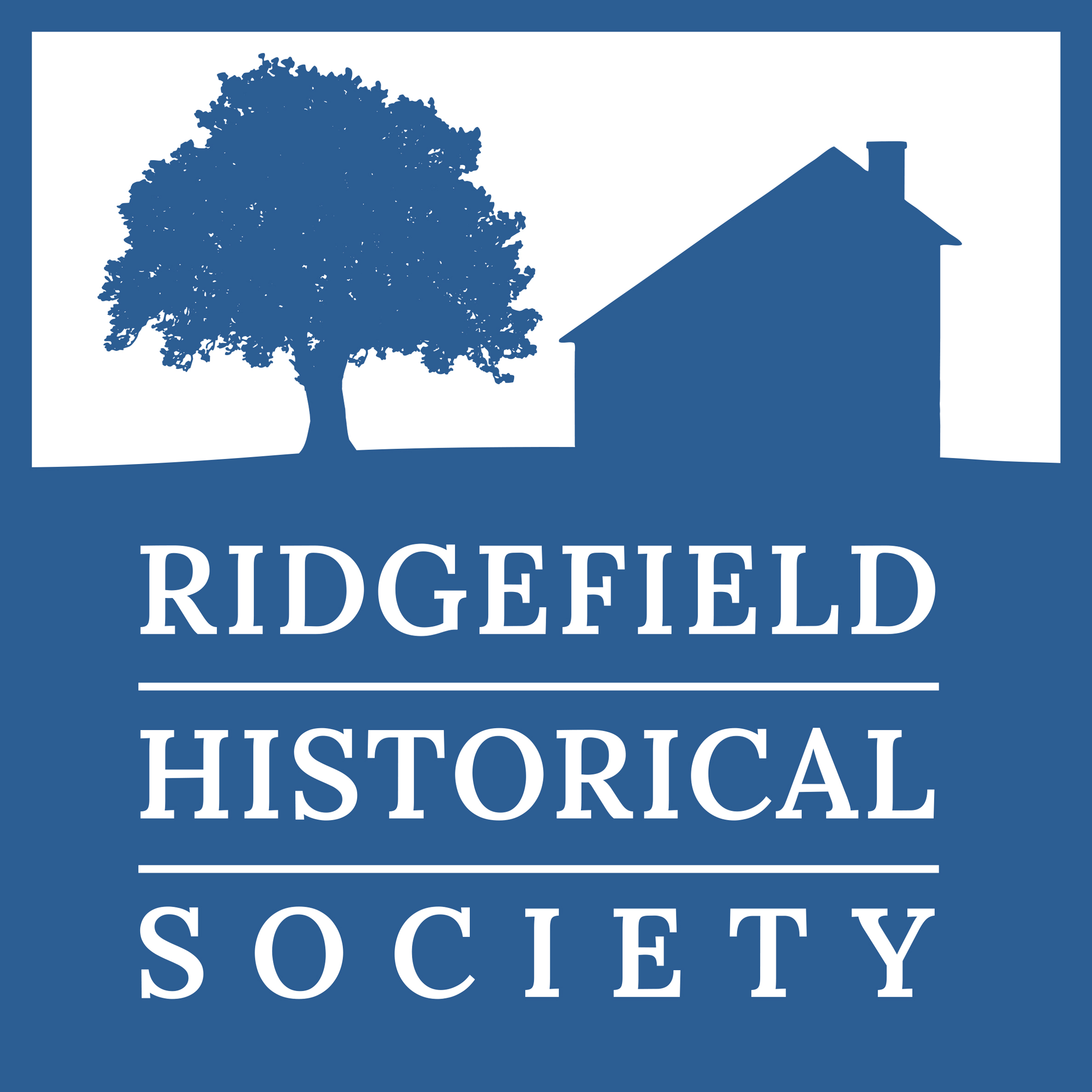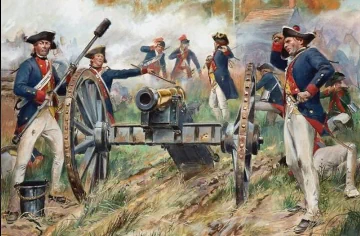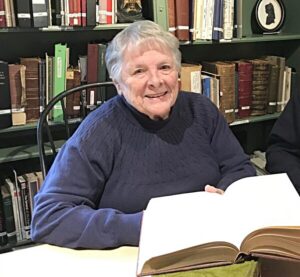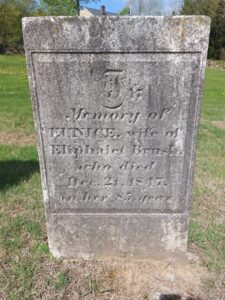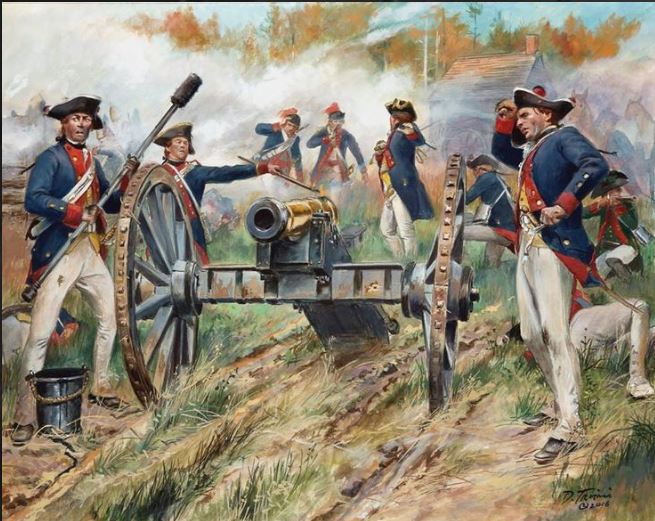
When General Tryon invaded western Connecticut in April of 1777 his army included six pieces of artillery. They were known as 3-Pound Guns which referred to the weight and size of the cannonball they fired. The 3-Pounder was a crew-serviced weapon that required a group of six artillerists to efficiently operate, along with 10 artillerists in reserve to drag the gun on the battlefield and to replace casualties, but as few as three men could work the gun.
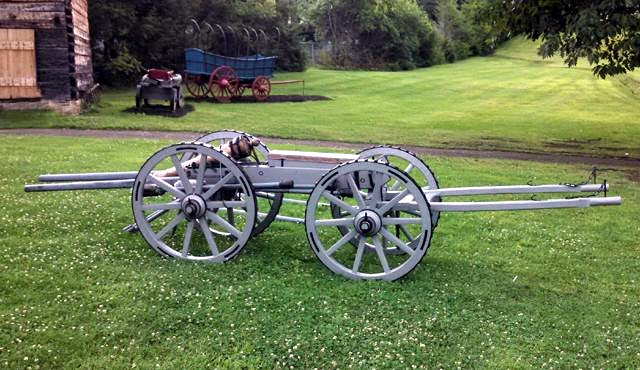
These smoothbore bronze guns were mobile enough to serve as close infantry support, were manageable on difficult terrain such as western Connecticut roads, and light enough that the six-man cannon crew and/or ten-man reserve could drag the gun with ropes or even carry it using handspikes under the gun carriage.
These guns were fielded by British forces as early as the 1740’s and by 1764 the Board of Ordnance listed the 3-Pounder among its established models. This light bronze gun was demonstrated before King George III in 1773 and was used routinely during the American Revolution. It was referred to as a “grasshopper,” “butterfly,” or “galloper,” which is attributed to a variety of factors including its mobility on the battlefield, its alleged resemblance to a grasshopper or butterfly when the handspikes were inserted into the gun carriage, as well as its tendency to jump from the recoil of a discharge.
All members of the artillery crew were extremely well-drilled. After discharging their gun, it would only take approximately 15 seconds to reposition the gun, clear the barrel of debris, swab the barrel, reload, and fire another aimed shot. A well drilled team could fire about four shots a minute. The barrel bore measured approximately 2.9” in diameter and typically fired three types of ammunition: solid iron shot, iron grape shot, or lead canister shot. All three rounds were supplied as fixed ammunition consisting of a powder charge packed in a linen bag and affixed to the projectile so the entire cartridge could be rammed down the barrel to the breech of the gun.
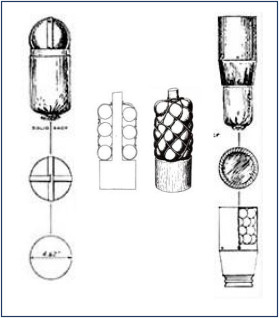
The different ammunition was employed based on the range of the target and the particular combat situation. Solid iron shot, simply referred to as a cannonball, constituted most 3-Pound cannon ammunition. The iron ball generally measured 2.75” in diameter, weighed slightly more than three pounds and could be fired out to distances of a 1,000 yards or more. This type of shot was typically fired at targets located between 300 to 500 yards from the cannon. When firing solid shot at infantry formations gunners would aim the shot before the front rank hoping to blast earth and rocks into the ranks and skip the shot through as many ranks as possible. Solid shot also was the most effective type of ammunition to batter fortified targets.
Canister Shot generally consisted of a tin can that fit within the bore of the gun and was filled with as many lead musket balls as possible. This type of shot was fired at targets located at 200 to 300 yards from the cannon. Gunners aimed their shot just in front of their target as they would with solid shot cannonball, so the canister would strike the ground throwing up dozens of musket balls as well as earth, rocks, and other debris into the intended target multiplying the effect of the blast.
At the closest range, zero to 200 yards, Grapeshot would be fired directly into the enemy lines. Grapeshot consisted of 16 or more, 1.5 to 2 ounce iron balls that were stacked in a fabric bag and wrapped in twine to hold the ammunition tightly together affixed to a wooden base or sabot that fit the bore of the gun. Grapeshot was a close-range anti-personnel ammunition that once fired, the balls broke apart forming a rapidly expanding cone downrange resulting in a shotgun-like blast. Grapeshot was rarely employed beyond 200 yards as the multiple projectiles rapidly lost velocity upon discharge.
Tryon’s Army was equally divided into two brigades and three cannons were assigned to each while the ammunition wagons trailed each brigade with the baggage train. The six 3-Pound Guns of the Royal Artillery were heavily used on the second day of the Danbury Expedition, during the April 27, 1777 Battle of Ridgefield.
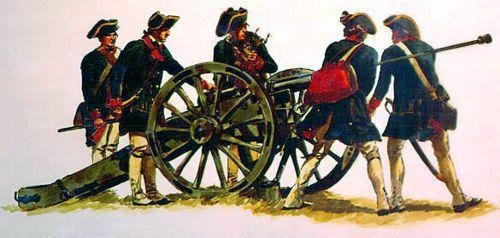
The Ridgefield Historical Society is currently accepting permission forms from landholders along the Route 116 battlefield route, the George Washington Highway, High Ridge, and Soundview Road. Please contact the Ridgefield Historical Society at [email protected] or call (203) 438-5821 if you would like to participate in this exciting project.
Please join our email list for the latest findings and news!
In recognition of the national significance of the April 27, 1777 Battle of Ridgefield, the National Park Service (NPS), American Battlefield Protection Program (ABPP) awarded the Ridgefield Historical Society and the Connecticut State Office of Historic Preservation a Research and Documentation Grant to study the engagement. The scope of the grant includes renewed historical research efforts to reconstruct the Battle of Ridgefield, determine where actions occurred related to the battle, assess the integrity of contributing properties for a possible future archaeological survey, and build community support and seek landholder permissions. Ridgefield Historical Society staff and researchers from Heritage Consultants, LLC are documenting areas in town where fighting occurred in addition to the three most well-known engagements along Route 116 and Main Street. The research team mapped battle-related artifacts recently identified through historical research and public outreach efforts. The results suggest that skirmishing between British and American forces occurred throughout the day in areas well beyond the three famous engagements. With landholder permission, an archaeological survey of these newly identified areas could yield additional evidence of battle and enrich our understanding of what happened during the Battle of Ridgefield.
